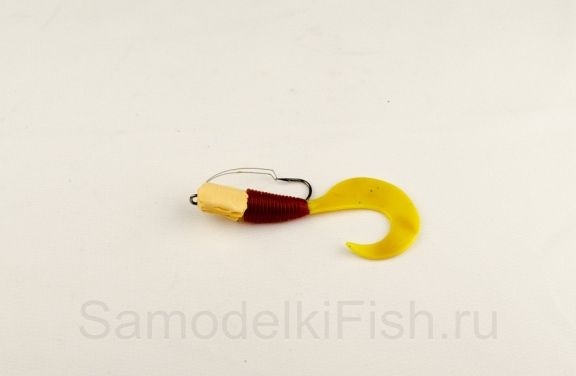
When fishing for jig baits in ponds, many fishermen encounter such a problem when the tackle buries in the silt and becomes not attractive or completely invisible to the predator. A way out of this situation would be an option in which the jig would rise from the bottom. In this case, the bait would not only not burrow into the sludge, but would become even more attractive, since such a silicone would imitate a fish looking for something at the bottom. One of the amateur fishermen has proposed a simple way to make such a bait.
Materials and tools:
- eared sinker;
- a piece of foamed plastic or a piece of foam;
- hook;
- winding ring;
- bait;
- scissors or a knife.
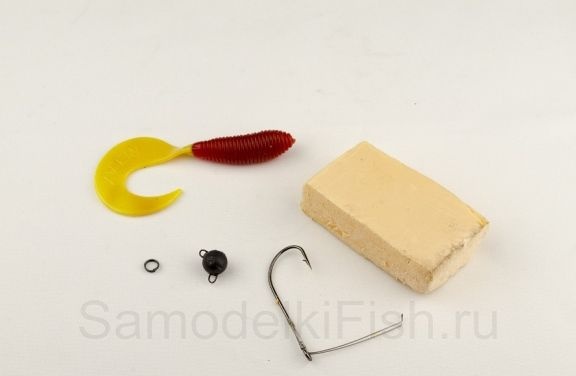
Manufacturing process
Step one. We cut ...
Some part needs to be cut off from the body of the bait, it is this part that will then be replaced by a lighter one, which will make the jig float. Cut off the bow. It is important not to lose money, because if you cut off too small a piece, this may not be enough for the bait to pop up. Buoyancy can be tested experimentally.
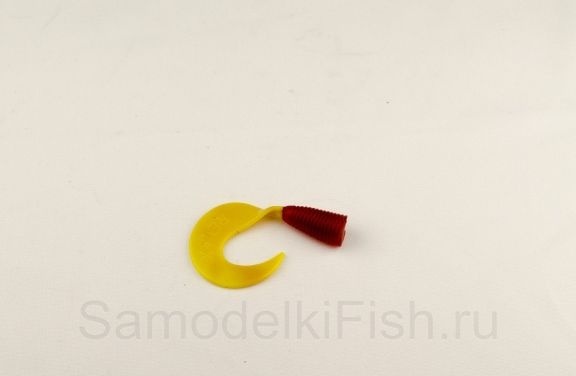
Step Two Create a floating nose
Now you need to take a piece of foam plastic and make from it that part of the bait that has been cut off. They should be as similar as possible in size and appearance.
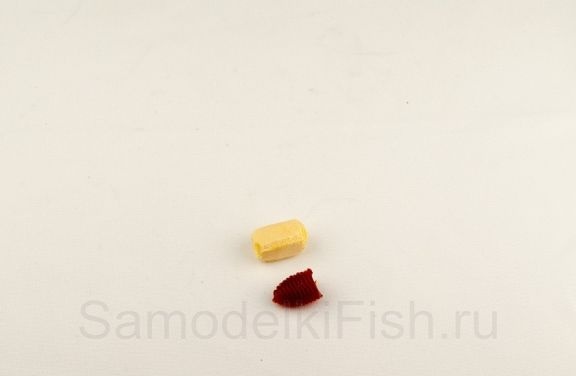
Step Three Gear assembly
First you need to take a hook and put a twister on it. Then, on the other hand, a foam piece of plastic is put on the hook. To make it easier, you must first make a hole in the workpiece with a needle or awl.
Well, now it remains to install the winding ring on the hook and use it to attach the eared sinker.
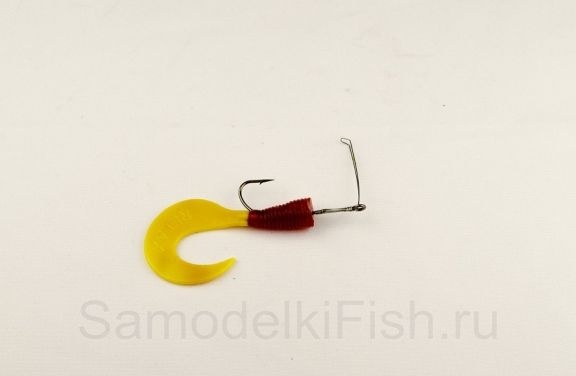
That's all, the tackle is ready. The most important thing in the manufacture of such a floating twister is the use of eared sinkers. Since the bait will be pivotally mounted, it will pop up, and the weight will be at the bottom. If you use a jig-head, then it simply will not allow the bait to emerge and play like when using an eared sinker.

In addition to a single hook, you can also use double or even triple. At the same time, the quality of the hook will increase significantly, but the risks of losing gear due to the hook will also increase significantly.
According to the author, such a bait works great when catching large perch and pike perch.
